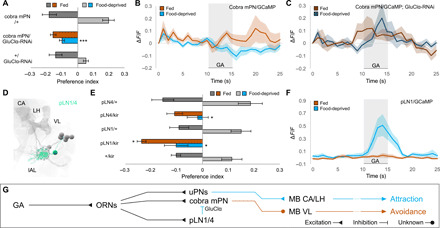Fig. 2. Upon food deprivation, the mPN pathway receives glutamatergic inhibition from pLNs.

(A) RNA interference (RNAi) knockdown of GluClα receptor in cobra mPN specifically abolishes attraction in food-deprived state (Kruskal-Wallis test, ***P < 0.001; n = 4 to 8) without affecting avoidance in fed state (P > 0.05). (B and C) Calcium responses of cobra mPN to GA (10−6) in wild-type (light) and GluClα-RNAi larvae (dark). GluClα knockdown abolishes state-dependent inhibition of cobra mPN seen in wild-type larvae (n = 8). (D) EM reconstruction of picky local interneurons pLN1/4 [mushroom body calyx (CA), vertical lobe (VL), larval antennal lobe (lAL; circled), lateral horn (LH)]. (E) Silencing either pLN1 or pLN4 with UAS-Kir2.1 abolishes attraction in the food-deprived state (Kruskal-Wallis test, *P < 0.05; n = 8 to 10). Silencing pLN1 (but not pLN4) modestly increases avoidance in fed state (*P < 0.05). (F) pLN1 exhibits enhanced calcium responses to GA (10−6) in food-deprived state (n = 7). (G) pLNs provide glutamatergic inhibition onto cobra mPN via the GluClα receptor.
